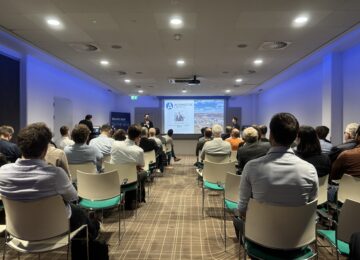Maximum use of batteries for grid support
Where is the best place to deploy batteries? In my opinion, in congested areas. Provided the batteries are deployed grid-supported. The flexibility a battery can provide can be confounded in several markets: the day-ahead market, intraday, imbalance, primary, secondary or tertiary reserve market and GOPACS, which stands for Grid Operators Platform for Congestion Services. Each market has its own challenges and opportunities.
Little price volatility
In the past, batteries were often deployed in the primary reserve market, but this market has become saturated. The imbalance market is interesting but can also only accommodate limited power as seen recently with many instances of two-way pricing. The secondary reserve market is attractive, but currently challenging because of the requirement for 24-hour, one-way delivery. The day-ahead market is large but still has too little price volatility for a profitable battery business case. Liquidity on GOPACS is low and thus offers sporadic opportunities.
Full control
Importantly, the price incentives of these markets are often at the national or European level, except in the GOPACS congestion market. A battery optimized in these national markets does not account for local congestion. This can lead to unintended exacerbation of congestion problems.
Recently, trials have started in which batteries are used purely for congestion purposes, such as at the Efteling (Enexis) and in Scheveningen (Stedin). The grid operator has full control over the battery and ensures that the unintended effects do not occur. This also means that it is a costly solution and does not lead to optimal use of battery capacity; there is no "value stacking." Nevertheless, these pilots teach us an important lesson, which is that there are great opportunities for battery technology in delivering congestion services.
Provide an incentive
The solution for cost-effective deployment of this technology is simple: provide an incentive to the battery operator so that it does exactly what is best for our energy system at all different levels - local, national and European. One way to achieve this is through alternative forms of contract such as Alternative Transmission Rights (ATR), for example, the time-based transmission right (ATR85) that will hopefully take effect on the high-voltage grid by April 1, 2025. In this form of contract, the grid user is allowed to use his contracted power 85 percent of the time, in the remaining 15 percent (1616 hours per year) he is denied access to the grid for off-take (e.g. battery charging in case of off-take congestion) or feed-in (discharge in case of generation congestion) on an on-call basis. Another example is the "Time Of Use" tariffs that will hopefully take effect from Jan. 1, 2025, again on the high-voltage grid. This will offer a discount of up to 40 percent if you manage to limit your offtake to off-peak hours only as far as off-take is concerned.
Net-positive incorporation
In my view, this is a good first step but insufficient. The potential of batteries to support the grid is greater. Instead of putting them on the sidelines, we should strive for a grid-positive incorporation of energy storage, in which batteries actively contribute to solving congestion as well as balancing the grid. Energy Storage NL is working with grid operators on a model capacity control contract (CSC) that will allow battery operators to be deployed on demand by grid operators to alleviate generation congestion in particular and also perform other useful functions. The battery operator ensures that the battery is sufficiently full to supply during the congestion period. In this way, batteries can be multipurpose while receiving fair and realistic compensation for congestion services. This is essential for an efficient and resilient energy system.
Robert Kleiburg
ESNL board member, chair of electricity storage working group
This column was published in Storage Magazine May 2024





